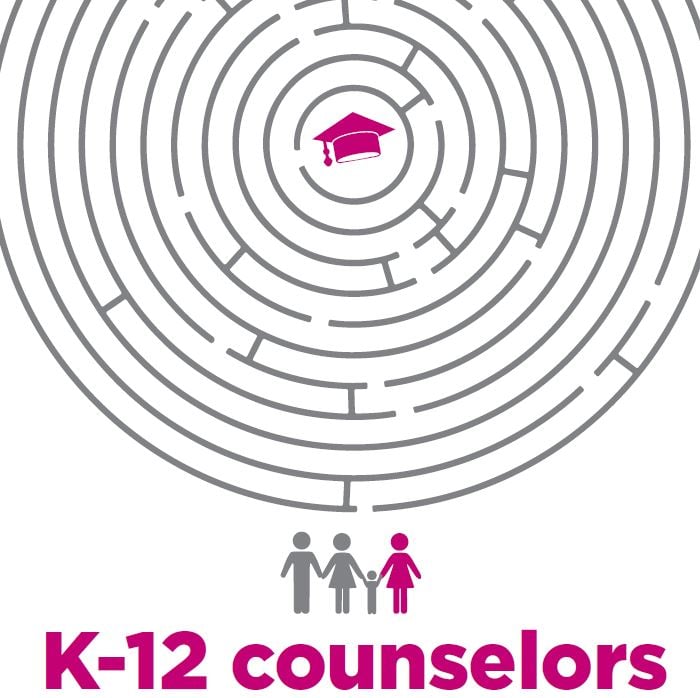In 2004, Congress passed the Individuals with Disabilities Education Act (IDEA), guaranteeing assistance to each public school child who receives special education and related services in the form of an Individualized Education Plan (IEP).
To be eligible for an IEP, a child must have one or more of the 13 disabilities listed in IDEA that adversely affects education performance, such as hearing, vision or physical impairments; mental challenges (such as anxiety and depression); learning disabilities such as dyslexia or ADHD; or others. (See a clearly spelled out list at Understood.org.)
The disability must affect the child’s ability to learn in a general education environment, and the child must need specialized instruction to make progress
in school. Each IEP must be tailored to the needs of the specific child in question.
In the past, many children who had cognitive or physical disabilities were often kept out of the classes of their peers. They were educated separately, and inherently, unequally. The idea behind IEPs was to create a framework that would allow children who have disabilities to participate in a mainstream school day so they could be out in their communities and thrive.
An accurate and comprehensive IEP can provide your child with special services and instructions, such as providing different ways of learning. For example, for a child with dyslexia, an IEP might allow for audiobooks and oral reports rather than printed books and written tests, while still maintaining the same curriculum requirements.
An IEP can be a guide for the school and family as well as a vehicle for advocacy for your child.
Getting started
If you think your child may have a special need, you can request a free evaluation from your child’s school or seek out a private evaluation. (See understood.org or pacer.org for a guide to that process.)
If your child is not of school age yet, you can review milestones and decide if your infant or child should be evaluated for free early intervention services and/or evaluations at helpmegrowmn.org.
Once your school-age child is found to be eligible for special education, the IEP process can begin.
An IEP outlines the services your school district will provide to your child at no cost.
During the IEP-establishment process, parents or guardians meet with a team that includes: a qualified school district representative; one of your child’s special education teachers; at least
one of your child’s regular teachers; and a person who is qualified to interpret evaluation results.
IEP meetings can help you to reach common ground with your child’s educators and medical providers and should provide a clear-cut document that lays out plans and expectations for the coming year.
The IEP team must review the IEP at least once a year; and the child must be reevaluated every three years to determine whether special instructions or services are still needed.
Minneapolis-based PACER — an information, training and advocacy center for families who have children and young adults with disabilities — offers a printable Guide to the IEP for Minnesota Parents, plus other resources, at pacer.org/parent.
Outside experts
It’s important to note that school districts are required to consider evaluations from independent evaluators. At Gillette Children’s Specialty Healthcare, for example, we provide a variety of testing options such as neuropsychology testing, speech-language pathology evaluations, audiology testing, and occupational and physical therapy evaluations.
Families can ask the school district to pay for an independent educational evaluation (IEE) by an outside expert. The district doesn’t have to agree. In that case, parents can fund the process.
504 plans
Not all children with disabilities qualify for an IEP. In these cases, parents can request a 504 plan, which is a plan based on Section 504 of the federal Rehabilitation Act of 1973, which has a broader definition of a disability than IDEA. This can include many of the disabilities covered under IDEA, but rather than showing it adversely affects academic performance, it must be shown (in a separate evaluation) to substantially limit one or more basic life activities such as learning, reading, communicating and thinking.
Though less formal than an IEP, a 504 plan can define how the school will provide supports or special accommodations, such as allowing a child with ADHD to take a test in a separate room with fewer distractions. (See the differences between IEPs and 504 plans in a side-by-side chart at understood.org or visit pacer.org/parent.)
At Gillette, social workers help families ensure the recommendations (or testing) provided at Gillette are accurately incorporated into either a 504 or an IEP.
Social workers can also assist families navigating communication with a school when there are disagreements.
Stay positive
An IEP (or 504 plan) isn’t a silver bullet or cure-all, but it is a tool that, when used effectively, will offer your child a greater opportunity to participate among his or her peers.
I encourage you to work with your child — and include your child in IEP meetings when appropriate — as well as your child’s educators to find effective solutions.
Resources
Help Me Grow Minnesota → helpmegrowmn.org
MN Department of Education → education.mn.gov/MDE/fam/sped
PACER → pacer.org/parent
Understood → understood.org
Dr. Madeleine Gagnon is a complex-care pediatrician at St. Paul-based Gillette Children’s Specialty Healthcare, which has clinics in the Twin Cities and throughout greater Minnesota.





















